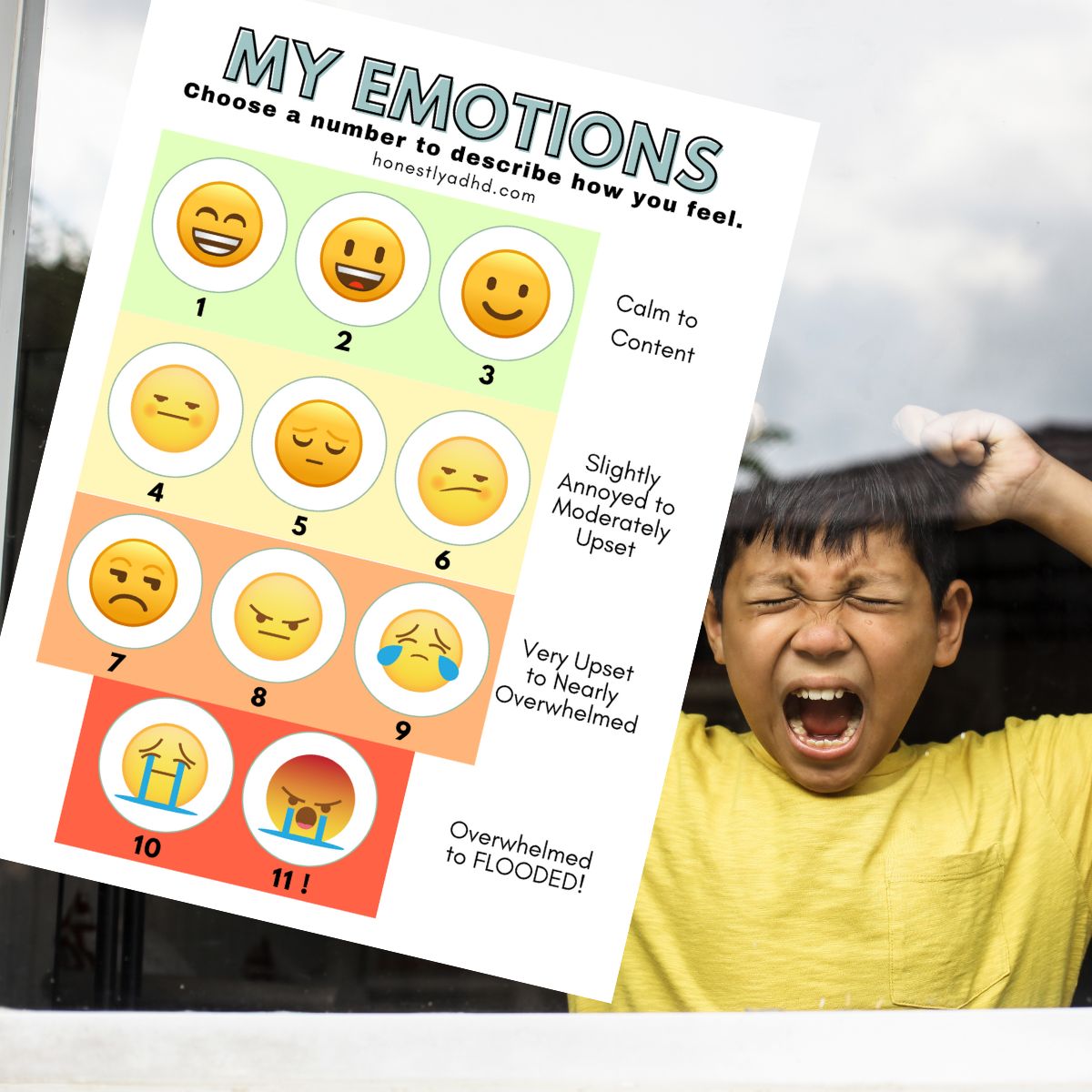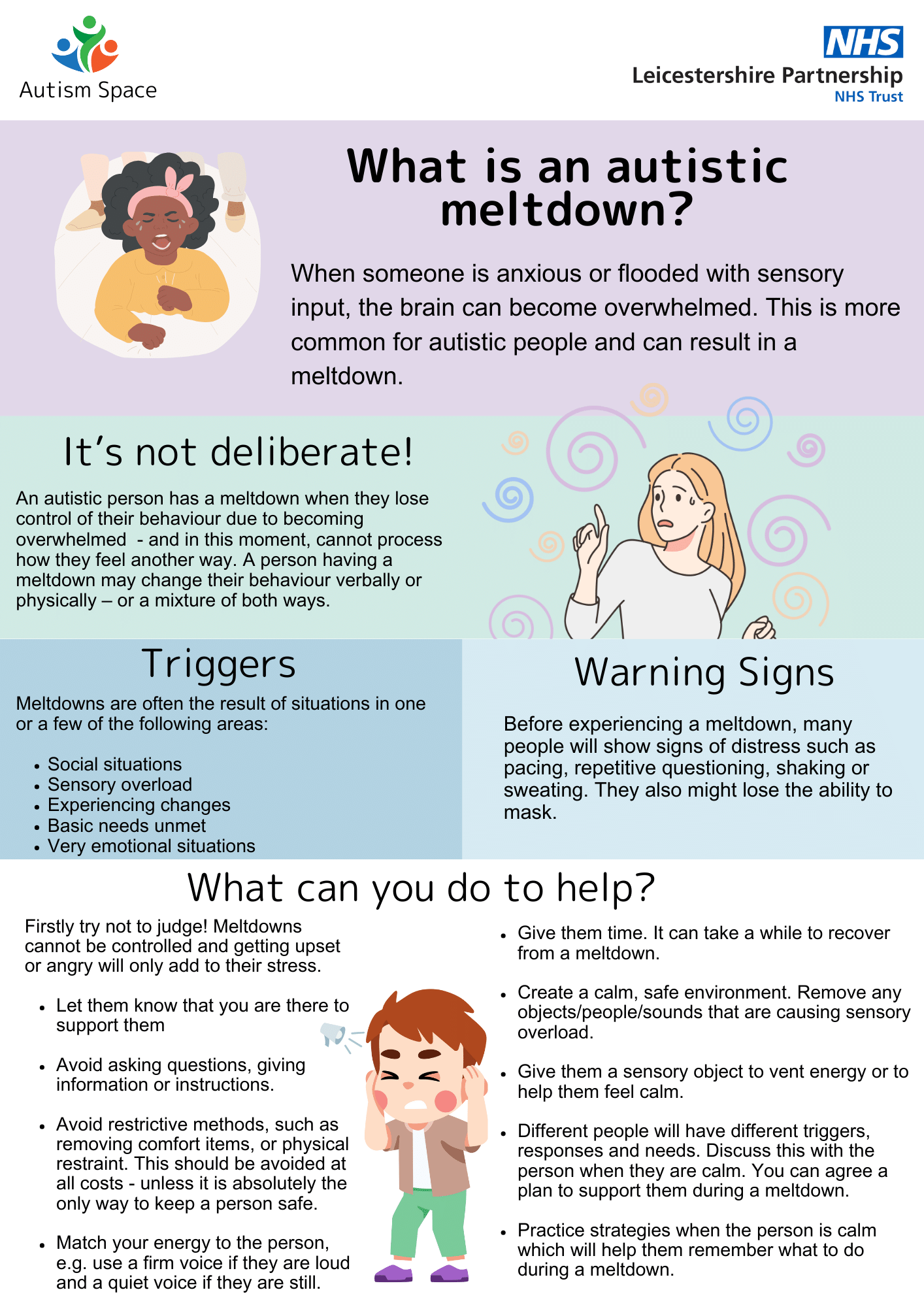Meltdown ADHD: Understanding The Storm Within
Ever wondered why some days feel like an emotional rollercoaster? For individuals with ADHD, meltdowns can be a common and overwhelming experience. Whether it's a burst of frustration, anger, or even sadness, these moments can leave you feeling drained and misunderstood. But here's the thing—ADHD meltdowns aren't just random outbursts; they're deeply rooted in how the brain processes emotions and stimuli.
Picture this: You're trying to focus on a task, but suddenly, everything around you feels too loud, too bright, or just plain overwhelming. That's when the storm hits. Meltdowns in ADHD are like emotional tsunamis, crashing down without warning. They're not something you can easily control, and that's where understanding becomes crucial.
So, why do we need to talk about this? Because knowledge is power. By diving into what causes ADHD meltdowns and how to manage them, we can create a more empathetic and supportive environment for everyone involved. This isn't just about coping—it's about thriving.
What Exactly Is a Meltdown ADHD?
Let's break it down. A meltdown ADHD isn't just about losing your temper. It's a response to sensory overload, emotional buildup, or frustration that builds up over time. Unlike tantrums, which are often goal-oriented, meltdowns are involuntary reactions to stressors that overwhelm the brain.
For those with ADHD, the brain works differently. It struggles with regulating emotions and filtering out distractions, making it easier for small triggers to snowball into massive emotional reactions. These reactions aren't always immediate—they can simmer under the surface until the pressure becomes too much to handle.
Imagine your brain as a pot of water on the stove. Normally, you can keep the heat manageable. But when ADHD comes into play, the heat spikes unpredictably, and before you know it, the water is boiling over. That's what a meltdown feels like—an unstoppable surge of emotions that takes over.
Common Triggers for ADHD Meltdowns
So, what sets off these emotional storms? Well, it varies from person to person, but there are some common culprits:
- Sensory Overload: Too much noise, bright lights, or crowded spaces can push someone with ADHD over the edge.
- Emotional Buildup: Suppressing emotions or dealing with unresolved issues can lead to a sudden release of pent-up feelings.
- Task Overwhelm: Being faced with a seemingly insurmountable task or deadline can trigger frustration and anxiety.
- Changes in Routine: ADHD thrives on structure, so sudden changes can throw things off balance.
Understanding these triggers is the first step toward prevention. By identifying what sparks a meltdown, you can start building strategies to mitigate its impact.
Why Do ADHD Meltdowns Happen?
It all comes down to brain chemistry. People with ADHD have differences in neurotransmitter activity, particularly in dopamine and norepinephrine. These chemicals play a big role in regulating mood, attention, and impulse control. When they're out of balance, it can lead to emotional dysregulation.
Additionally, the prefrontal cortex—the part of the brain responsible for decision-making and impulse control—is often less active in individuals with ADHD. This makes it harder to pause and think before reacting, leading to more impulsive and intense emotional responses.
How to Recognize an ADHD Meltdown
Meltdowns can manifest in different ways, depending on the individual. Some people may lash out verbally, while others might withdraw or cry uncontrollably. Here are a few signs to look out for:
- Inability to stop crying or yelling
- Physical reactions like shaking or pacing
- Difficulty processing information or responding to questions
- Feeling "flooded" with emotions
It's important to note that these reactions aren't always visible. Some people experience internal meltdowns, where they're overwhelmed but manage to keep it contained on the outside. This doesn't make their experience any less valid.
The Difference Between Tantrums and Meltdowns
While both involve emotional outbursts, the key difference lies in intent. Tantrums are often goal-driven, with the person seeking attention or a specific outcome. Meltdowns, on the other hand, are uncontrollable responses to overwhelming stimuli. They're not about getting something—they're about releasing pent-up emotions.
Managing ADHD Meltdowns: Practical Strategies
Now that we know what meltdowns are and why they happen, let's talk about how to handle them. Here are some strategies that can help:
1. Create a Safe Space
Having a designated "safe space" where you can retreat during a meltdown can provide comfort and reduce the intensity of the reaction. This could be a quiet room, a corner with soft cushions, or even a favorite chair.
2. Use Grounding Techniques
Grounding exercises can help bring you back to the present moment and calm your nervous system. Try focusing on your five senses—what can you see, hear, touch, smell, and taste right now?
3. Practice Mindfulness
Mindfulness meditation can improve emotional regulation over time. By learning to observe your thoughts and feelings without judgment, you can develop greater awareness of when a meltdown might be approaching.
4. Communicate Your Needs
Let people around you know what helps you during a meltdown. Whether it's giving you space, talking you through it, or simply being there, clear communication can make a big difference.
Seeking Professional Support
Sometimes, managing ADHD meltdowns requires more than just personal strategies. Therapy, medication, and coaching can all play a role in helping you navigate these challenges. Cognitive-behavioral therapy (CBT), in particular, has been shown to be effective in improving emotional regulation for people with ADHD.
Don't be afraid to reach out for help. A mental health professional can provide guidance tailored to your specific needs and help you develop a plan to manage meltdowns more effectively.
Medication and ADHD Meltdowns
While medication isn't a cure-all, it can help stabilize brain chemistry and reduce the frequency and intensity of meltdowns. Stimulant medications, for example, can improve focus and impulse control, making it easier to regulate emotions. However, it's important to work closely with a healthcare provider to find the right treatment plan for you.
The Role of Environment in ADHD Meltdowns
Your surroundings can have a significant impact on how often and how intensely meltdowns occur. Creating a structured, organized environment can help reduce triggers and provide a sense of stability. Here are a few tips:
- Minimize distractions by decluttering your space
- Establish a consistent daily routine
- Use visual reminders to stay on track
- Set realistic goals and break tasks into smaller steps
By controlling your environment, you can create a buffer against the chaos that often leads to meltdowns.
Building a Support System
You don't have to face ADHD meltdowns alone. Surrounding yourself with understanding friends, family, and colleagues can make a huge difference. Educating them about what meltdowns look like and how they can help can foster a more supportive environment.
Empathy and Understanding: The Key to Coping
One of the most powerful tools in managing ADHD meltdowns is empathy. Whether you're the one experiencing them or supporting someone who does, approaching the situation with compassion can transform the experience. Remember, meltdowns aren't a sign of weakness—they're a natural response to overwhelming stimuli.
By fostering understanding and providing the right resources, we can create a world where ADHD meltdowns are met with kindness and support rather than judgment.
How You Can Help Someone in a Meltdown
If someone close to you experiences ADHD meltdowns, here's how you can help:
- Stay calm and avoid escalating the situation
- Offer a safe space or remove them from the triggering environment
- Provide comfort without trying to "fix" the problem
- Check in afterward to see how they're feeling
Conclusion: Embracing the Storm
ADHD meltdowns can be challenging, but they don't have to control your life. By understanding their causes, recognizing the signs, and implementing effective strategies, you can learn to navigate these emotional storms with greater ease.
Remember, you're not alone in this journey. Seek support when you need it, and don't hesitate to reach out to others who may be going through similar experiences. Together, we can create a more empathetic and understanding world for everyone with ADHD.
So, what's next? Share your thoughts in the comments below, or check out our other articles for more tips and insights on living with ADHD. Let's keep the conversation going!
Table of Contents
- What Exactly Is a Meltdown ADHD?
- Common Triggers for ADHD Meltdowns
- Why Do ADHD Meltdowns Happen?
- How to Recognize an ADHD Meltdown
- The Difference Between Tantrums and Meltdowns
- Managing ADHD Meltdowns: Practical Strategies
- Seeking Professional Support
- Medication and ADHD Meltdowns
- The Role of Environment in ADHD Meltdowns
- Building a Support System



Detail Author:
- Name : Deven Balistreri
- Username : mabelle49
- Email : coy89@hegmann.com
- Birthdate : 1996-02-28
- Address : 8338 Idell Vista Gerryberg, KY 75004
- Phone : +1-808-633-5707
- Company : Greenfelder-Strosin
- Job : Ophthalmic Laboratory Technician
- Bio : Cumque minima sequi autem doloribus modi architecto. Exercitationem quia vel aut sequi cum non minima. Fuga maxime eos odio voluptas aperiam voluptatem veritatis adipisci.
Socials
twitter:
- url : https://twitter.com/madison_hettinger
- username : madison_hettinger
- bio : Nesciunt aut est error rerum omnis omnis. Iure atque consequatur minus sit sit et pariatur. Recusandae voluptas qui accusantium dolore aut quibusdam.
- followers : 3830
- following : 2682
linkedin:
- url : https://linkedin.com/in/mhettinger
- username : mhettinger
- bio : Incidunt aut dolor autem.
- followers : 2386
- following : 168
tiktok:
- url : https://tiktok.com/@madison2483
- username : madison2483
- bio : Amet officia tempore enim et.
- followers : 473
- following : 435
facebook:
- url : https://facebook.com/madison.hettinger
- username : madison.hettinger
- bio : Quibusdam eum qui dignissimos soluta.
- followers : 844
- following : 2037